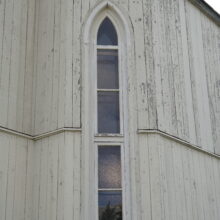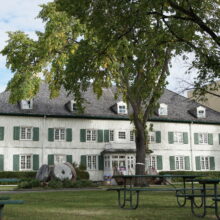Winnipeg – St. Boniface Museum
There have been a lot of Manitoba’s “firsts” at 494 Taché Avenue, contributing not just to the history of St. Boniface but to the social fabric of Manitoba. Likely, the Grey Nuns did not anticipate such a grand legacy when they arrived in 1843 and began construction of their convent in 1846.
The Sisters initially lived in a stone house while awaiting the construction of their building. Even when they moved in, it would take four more years to complete the two-storey nunnery, made of oak.
Missionary L’Abbé Louis-François Richer Laflèche combined a handful of styles in his design of the nunnery. Elements of French-Canadian construction, Georgian, and British influences can be found throughout. The high pitch roof is French, while the symmetrical and rectangular façade is typically associated with Georgian architecture.
The building served a variety of community needs: hospital, orphanage, school, and later a senior’s home. Outside of the school, all were firsts in Western Canada. The Grey Nuns remained in the building until 1956.
Threatened with demolition, the St. Boniface Historical Society led a campaign to save the building. Designated a National Historic Site in 1958, it took another decade to reopen, as the St. Boniface Museum.















